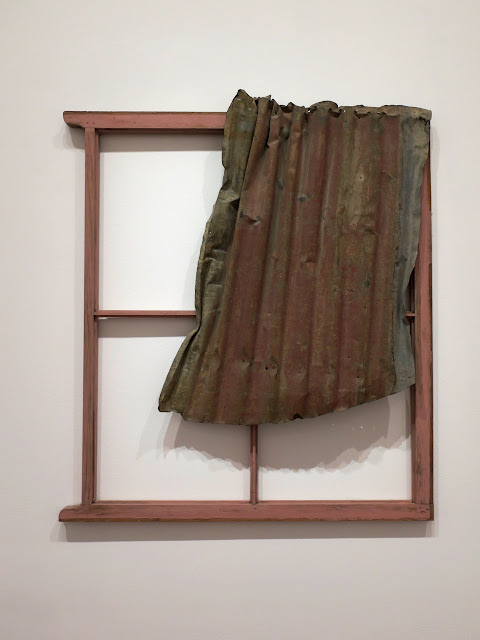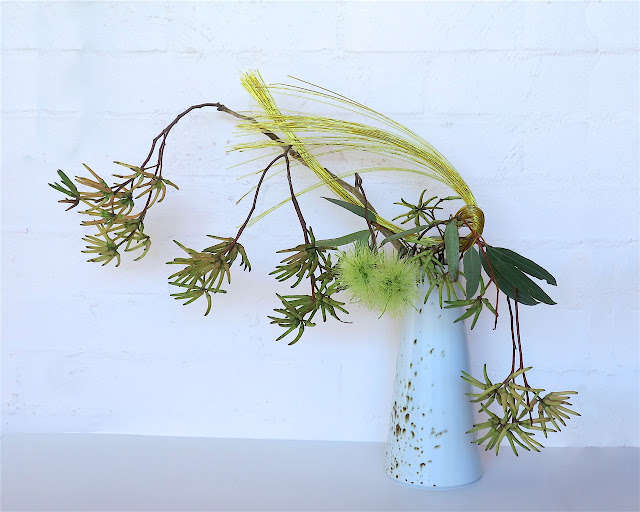For those of you who have a chance to visit Melbourne during the next three weeks I would like to strongly recommend an exhibition at the NGV Australia gallery in Federation Square.
The exhibition "Found and Gathered", features two women artists, Rosalie Gascoigne (1917-1999) and Lorraine Connelly-Northey (Born 1962). Many Sogetsu Ikebana practitioners will know that the late Rosalie Gascoigne studied ikebana with Norman Sparnon in the early 1960s and went on to develop a unique style of 'found object' sculpture. In 1982 she was the first female artist to represent Australia in the Venice Biennale of that year.
Above, Gascoigne's "Pink window" is her first assemblage that incorporated metal, which she attached to the window frame. For her, the work evoked loneliness, as she imagined a country woman looking out across an empty plain from the window.
This work, "Pieces to walk around" is intended to evoke the shifting light and shades of grey in the countryside.
Lorraine Connelly-Northey's "...work is inspired by her maternal... (indigenous) heritage..)." She uses found objects which she re-works to reference traditional indigenous cultural objects. (NGV curatorial signage)
Above, a traditional string-bag form, made from metal mesh and wire.
"Possum skin cloak: Blackfella road", almost 2.7m wide, made from rusted iron and tin, fencing and barbed wire, is the artists' response to the desecration of aboriginal remains during the construction of a road near Swan Hill.
I found these works quite very powerful in their symbolic representation. Also, they are extraordinary in the way the artist has created soft textural impressions from stiff and harsh materials. To me this exhibition is very compatible with the Sogetsu perspective because of its focus on line, space, texture and a restricted colour pallet.
* * * * *
Some weeks ago I made a couple of ikebana arrangements using Strelitzia from the garden because it was coming to the end of the flowering.
I made this ikebana first, being drawn to the gentle curve in the longest stem. I chose two other flowers and found that they were able to complement the movement of the principal line. The ceramic vase by Graeme Wilkie, was chosen because of the corresponding lines on its surface. These flowers are from the Strelitzia juncea plant in the garden which has only very tiny leaf margins at the end of the pointy stems. Therefore I have used some New Zealand Flax, Phormium, leaves to create a mass of three rectangular box shapes placed horizontally.
Three weeks later there was only one Strelitzia flower left in the garden and we were about to have a heavy down-pour of rain.
Hence "The last Strelitzia" . I should add, last for the season, as the plant is looking very healthy at the moment. Again I have substituted other leaves to make a mass. In this instance, three stems of Umbrella Grass, Cyperus alternifolius. I have cut the ends of the leaves so that the three groups of leaves are different sizes. This also makes the lines sit straighter as they do not droop at the end, giving a more modern geometric look to the ikebana.
The spherical ceramic vase, which I bought in 1972, is by the late South Australian ceramic artist Don Jones. I clearly remember being drawn by the sight of this vase, from a distance of many metres. It remains a favourite.
Greetings from Christopher
29th January 2022




























